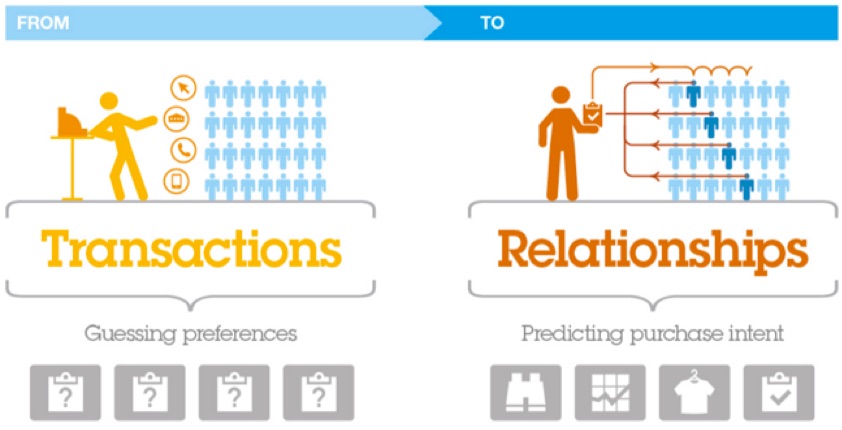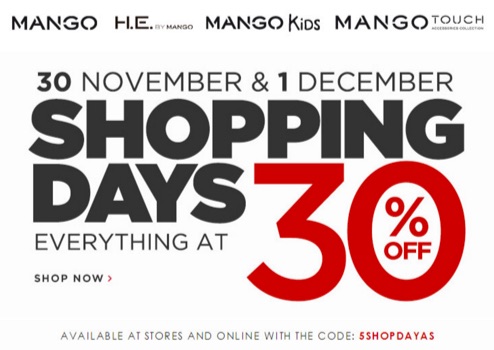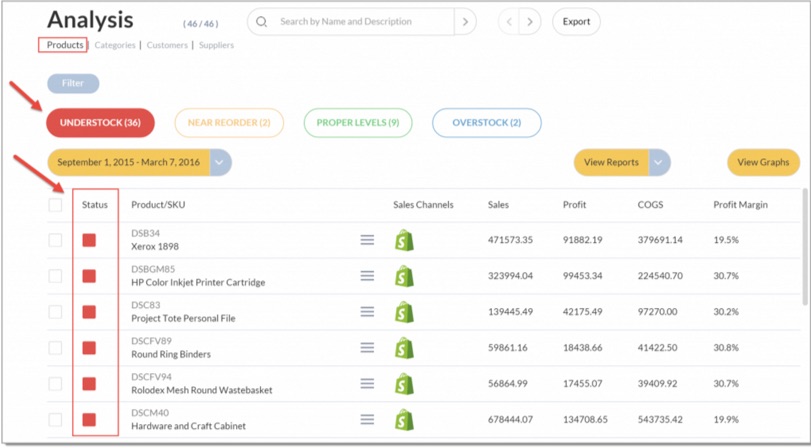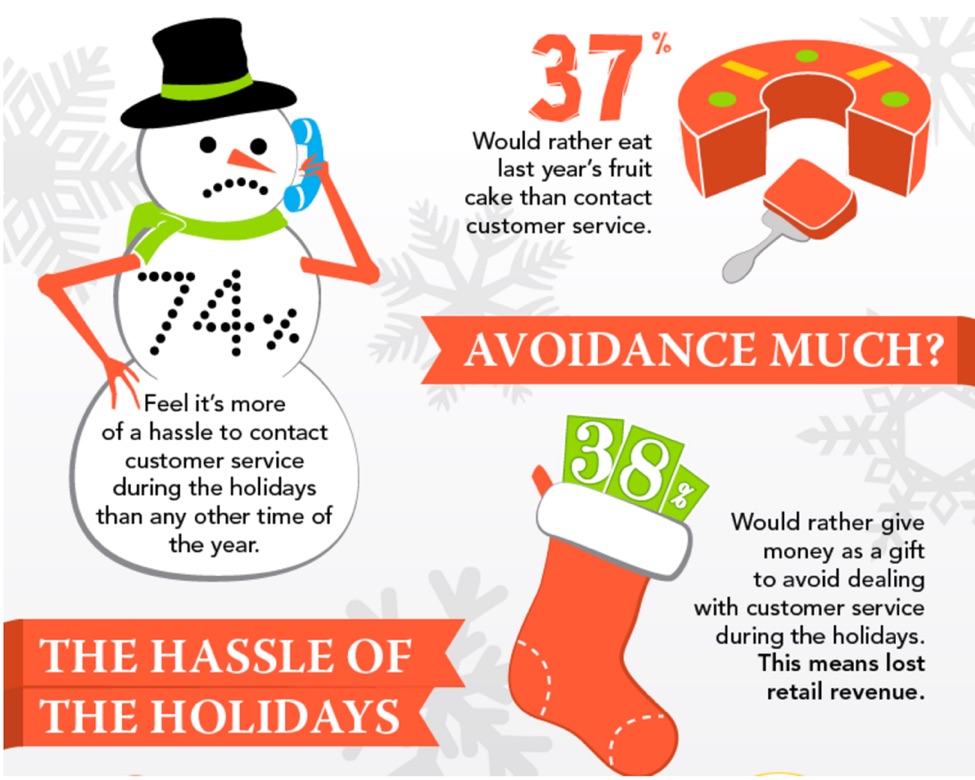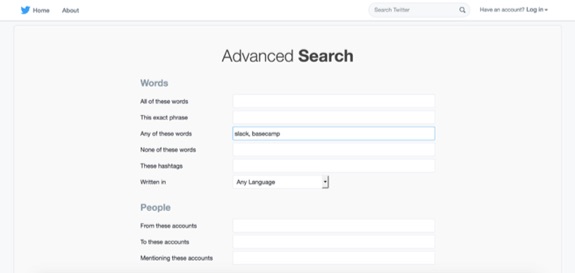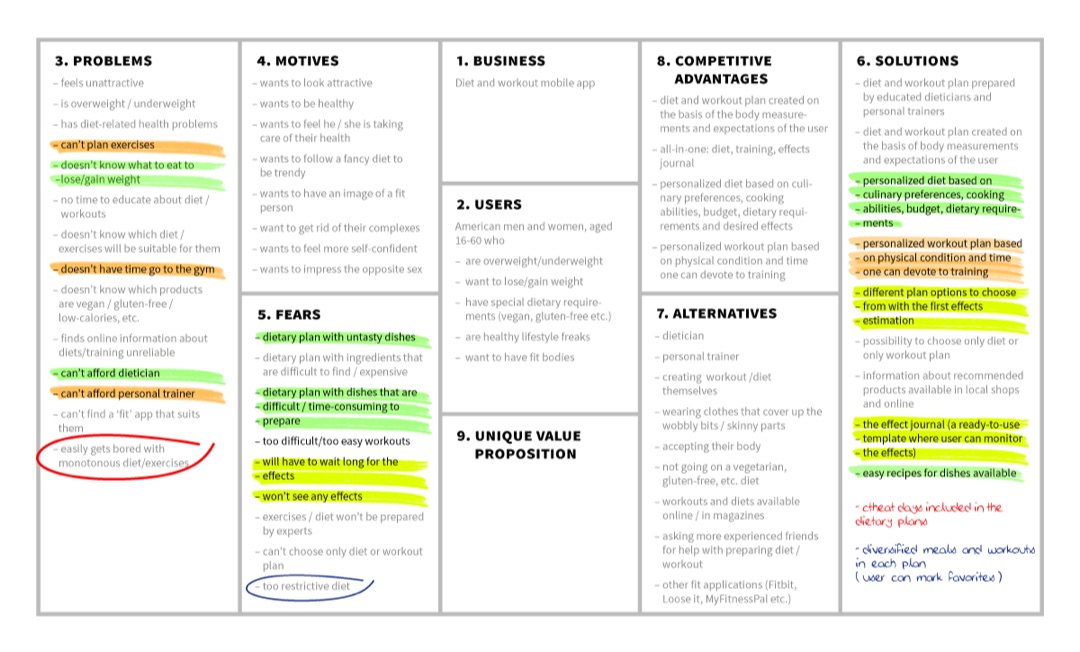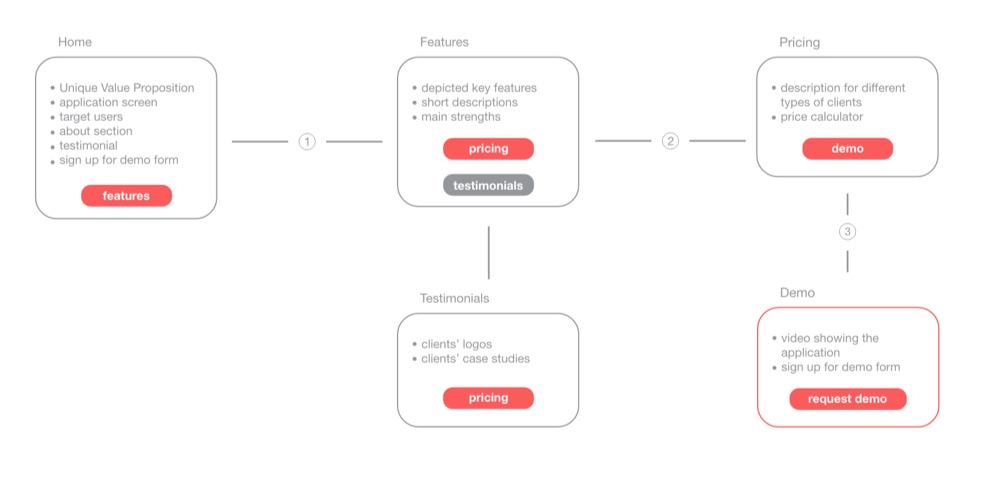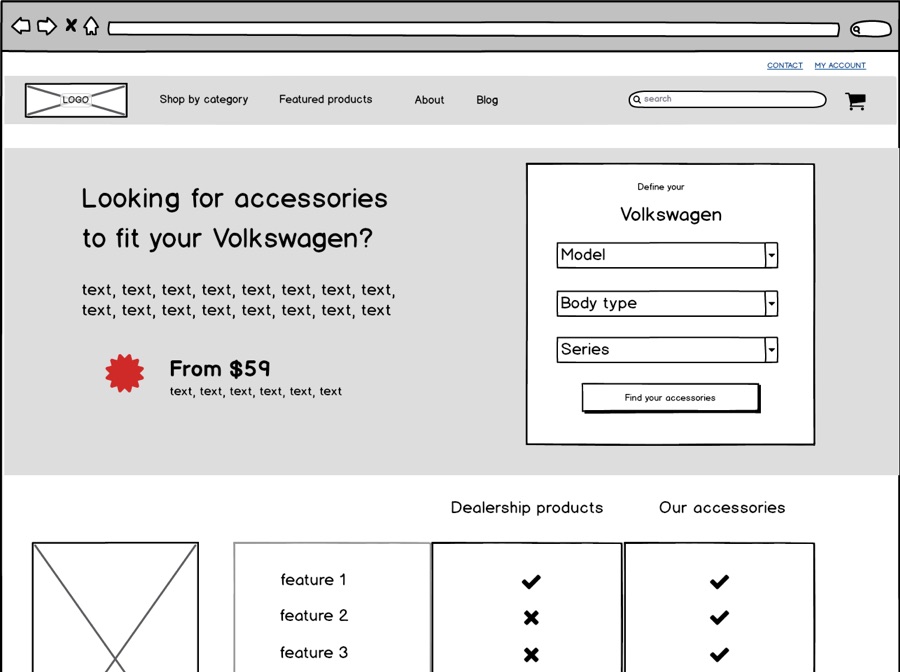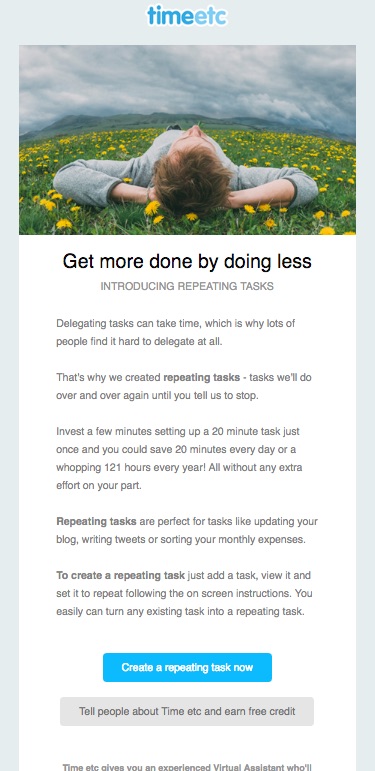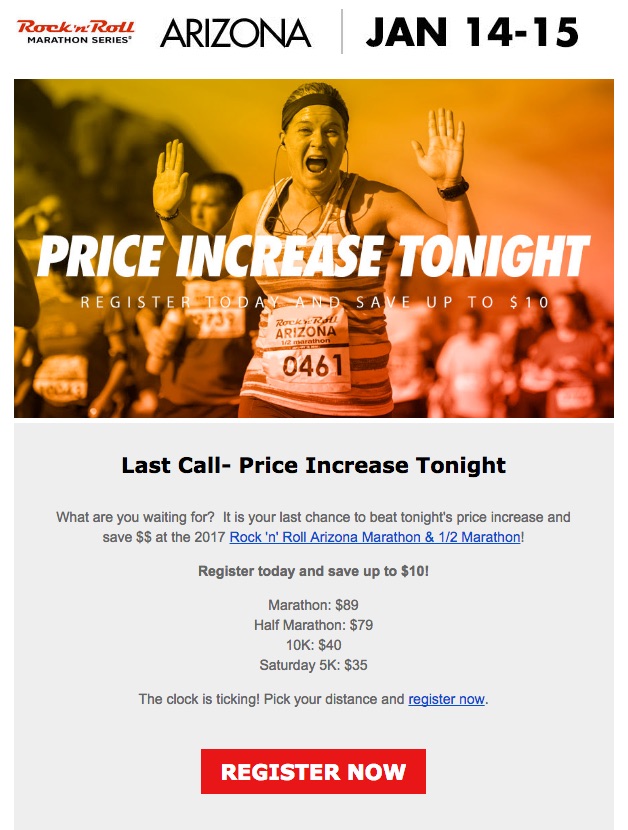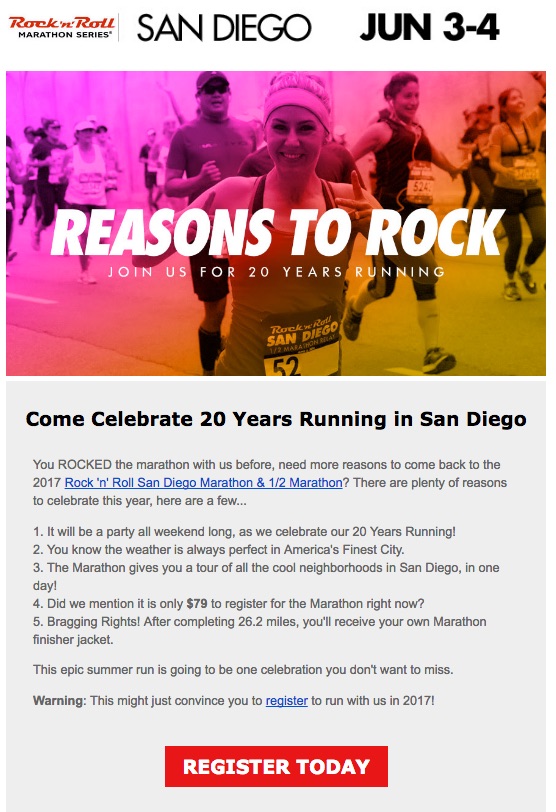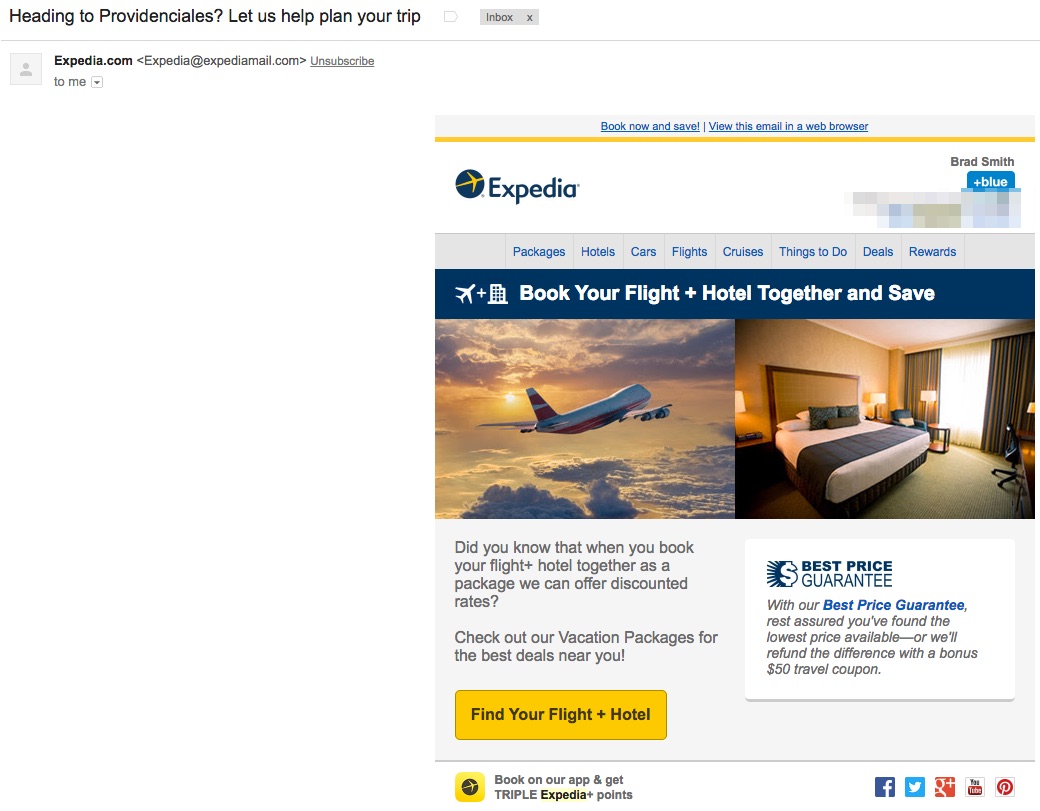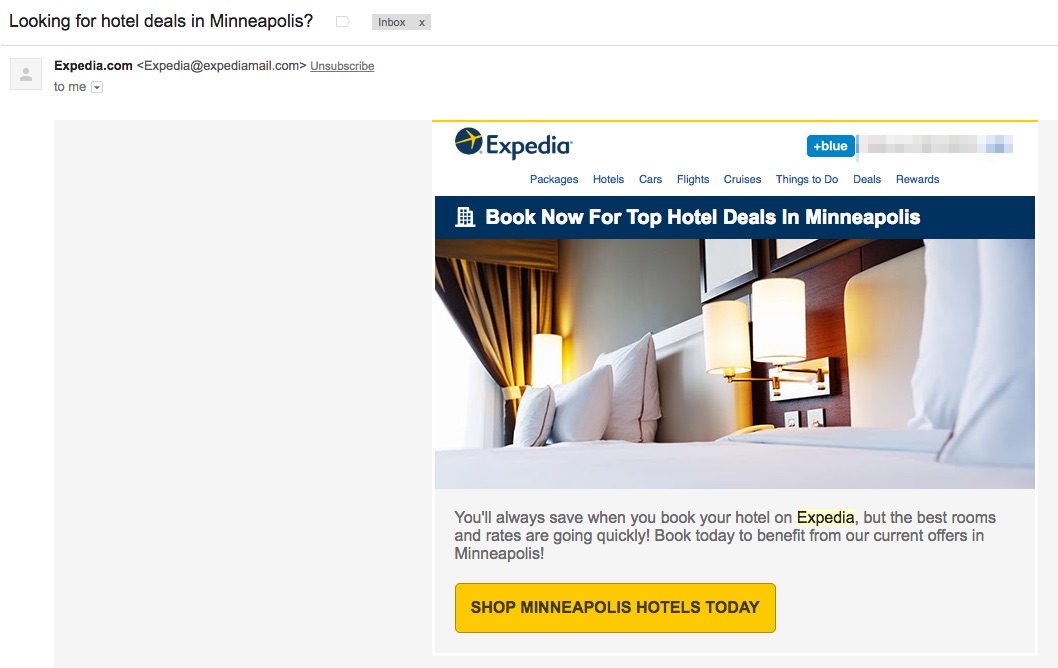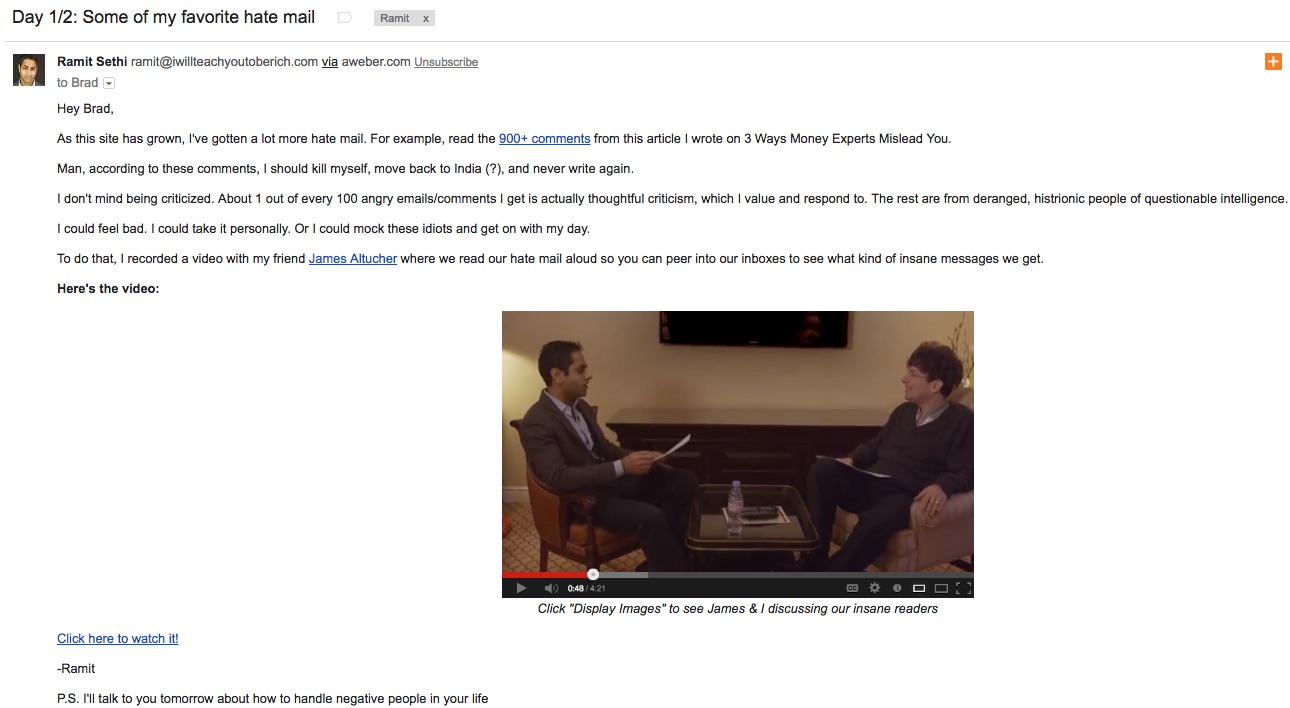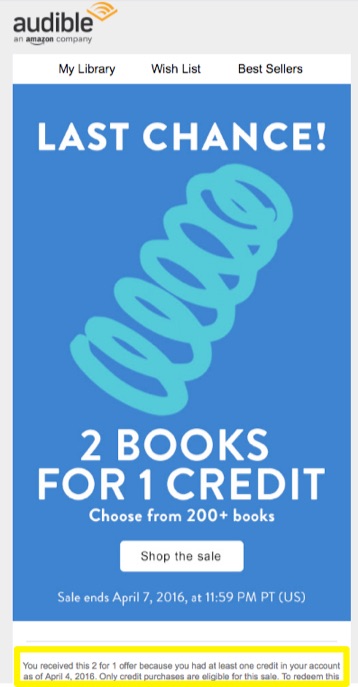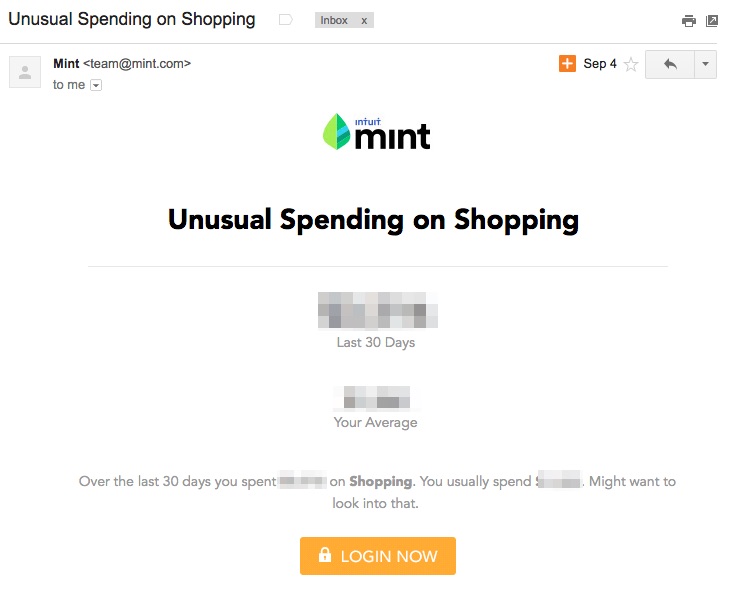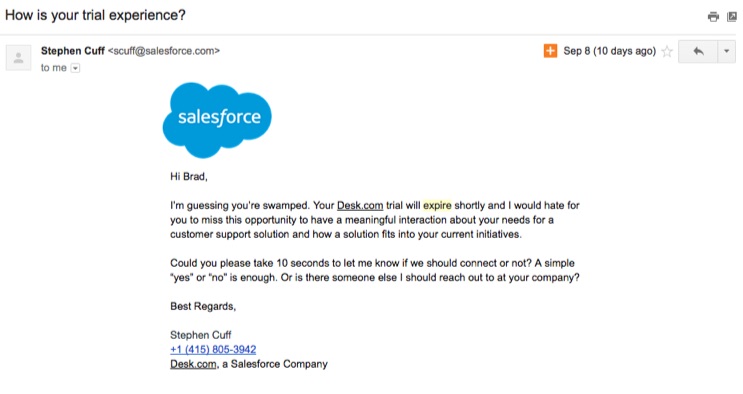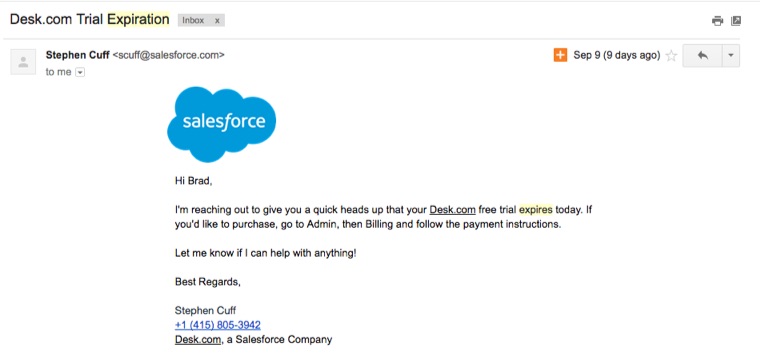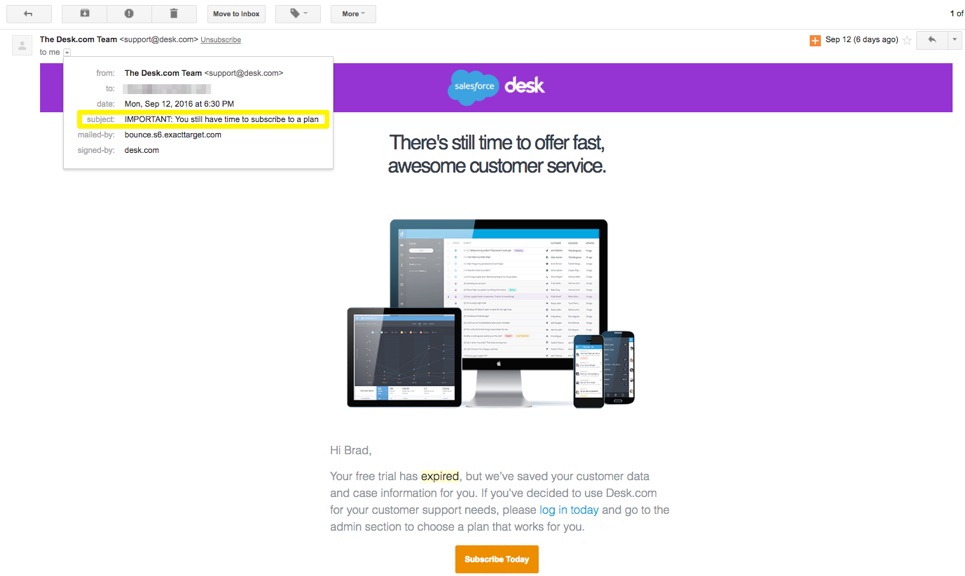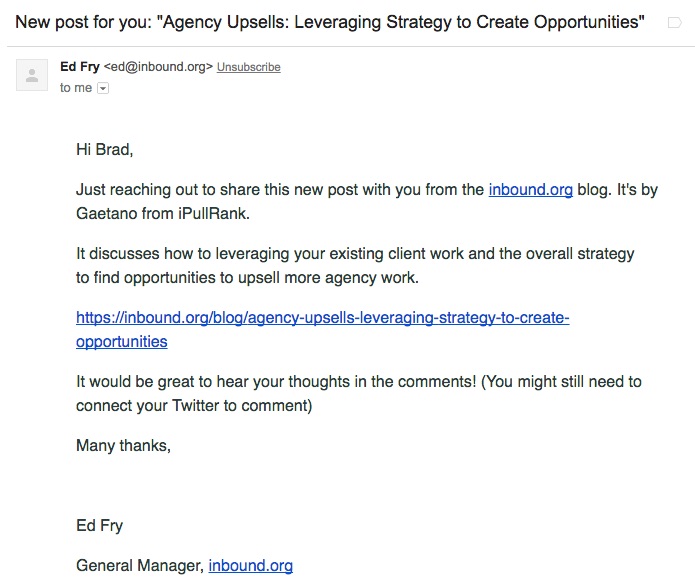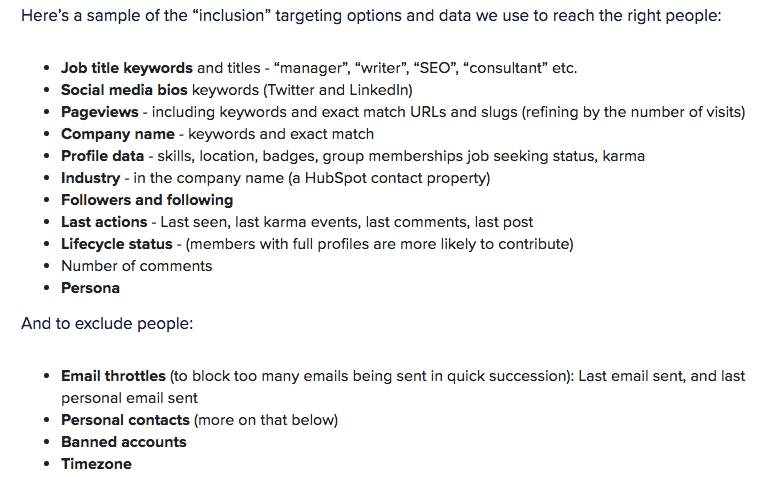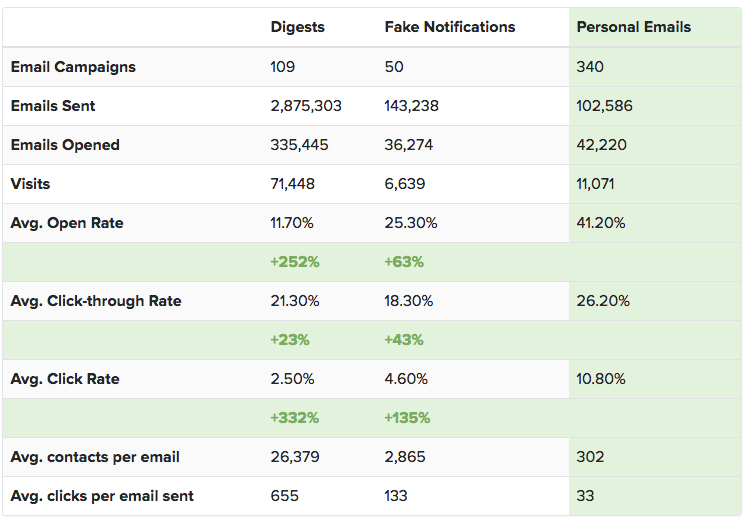As a discerning digital marketer and business owner, you're on top of the latest trends and tips on how to convert.
You know all about SEO, and CRO, and PPC (that's a whole lot of acronyms). You're an active content creator, social media participant, and advocate for your brand.
And you, of course, recognize the power of the buyer persona.
Most successful businesses – from ecommerce to SaaS and all points in between – have at least one or two at the ready. They act as a guide, providing hints and suggestions on the best way to do something – anything – in order to appeal to your customers.
Without them, you're flying blind. But let's back up for a moment.
Buyer Personas?
Creating buyer personas is a useful exercise for any business: if you don't know exactly who you're going after, how can you possibly expect to find, connect, engage, and convert them?
Personas allow you to zero in on the ideal target in your marketing, your content, your communication, and virtually everything else.
Many companies complete persona cards with photos, descriptions, and identifying characteristics (just as an author might do for each character in the story…the personas represent each “character” in your story). They name the individuals, and refer to them by those names.
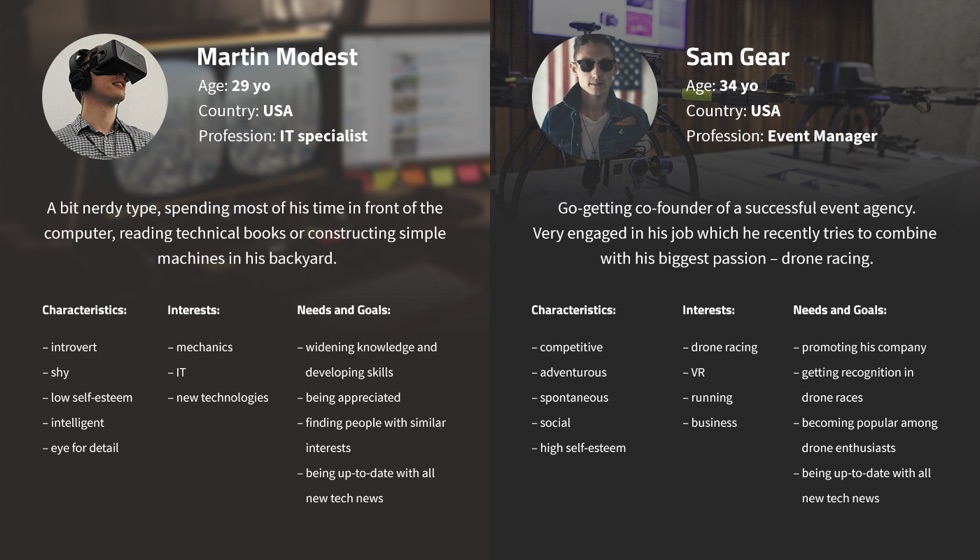
They define the various types of buyers for your product or service, including their demographics, motivations, interests, beliefs, and emotional responses. Personas are detail-oriented and contain many parts beyond just the obvious (age, gender, location, and so forth).
Personas Just Make Sense
If that all sounds well and good – a cute albeit not terribly valuable activity – you're not seeing the bigger picture. In the uber-competitive modern business world, buyer personas are a pivotal component.
- 71% of companies that exceed their revenue and lead goals use personas
- 56% of businesses have created higher quality leads, 24% have generated more leads, and 39% experienced higher conversion rates by using personas
- 55% increase in organic search traffic
- Email campaigns using buyer personas experienced twice the open rate and five times the click-through rate as those without them
- More website traffic, better open and click-through rates, increased sales and revenue, more leads…the list of benefits goes on and on
Think about it: a concrete buyer persona lets you get inside the head of your customers and prospects. You're no longer making guesses or assumptions about what they might like, want, need, or respond to. You know.
Mark Schaefer of Business Grow says that 3-4 buyer personas typically account for 90% of your sales. Why? Because everything you throw at them is already targeted and exactly what they've been looking for. It's an easier (if not easy) sell.
Buyer personas = good.
Your buyer personas are a fictionalized version of your (very real) ideal buyer(s) based on legitimate data and validated common traits.
The Data Deluge
But just where does this data come from? Take your pick:
- Search terms used to find you
- Content they view, search for, or download on your site
- Heat maps (what is drawing their attention)
- Search terms used on your site
- Speak to your sales department about customer details
- Customer surveys
- Customer feedback
- Contact database
- Market research and segmentation
- Social media (Facebook Insights and Twitter Analytics, for example)
- Competitor data (Similar Web and Compete can provide details)
- Analytics (language, location, device, behavior, interests, etc)
These represent the usual suspects. Unfortunately, some of them – most notably surveys and questions – can be misleading. People aren't always 100% honest with their answers, either intentionally or accidentally.
A more atypical method – and one that can provide some seriously targeted data on your buyers and visitors – is A/B testing. It uses natural customer behavior and response to clarify and strengthen your personas.
(For more information and advice on buyer personas, check out The Complete Guide to Building Your Personal Brand, 20 Questions to Ask When Creating Buyer Personas, or How to Create a Buyer Persona Map)
A/B Testing?
You've no doubt heard about A/B testing already. It compares audience behavior and reaction to two samples – a control and a variation – to create powerful landing pages, effective email messages, and website design that resonates with an audience.
It allows for data-supported decisions that incrementally improve the performance of something. A tweak here, a different headline there, all moving towards better conversions and (ultimately) more revenue.
If you're not certain what it's all about, a good beginner's guide can bring you quickly up to speed (it's not hard to grasp the basics). A master's guide can dig a little deeper and explain in greater detail.
Either way, make sure you're including it at some level in your marketing and communication efforts.
Testing is Easier Than You Think
A well-crafted testing plan is essential to modern marketers. What's not working can always be fixed. What's good can always be better.
It allows you to gradually find the optimal design/wording/structure for your particular target. It's not a quick fix. It's not a shortcut. It's just smart, savvy behavior for the digital 21st century.
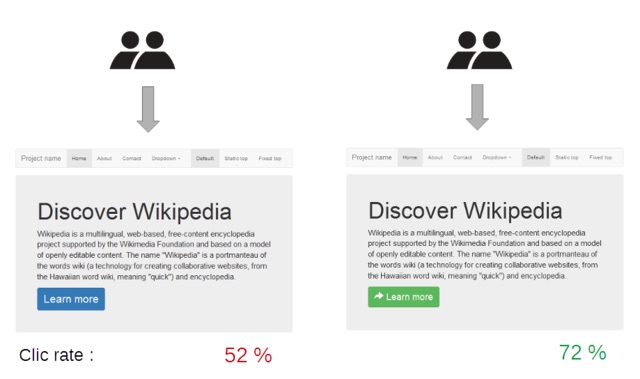
A/B testing = good.
Testing can find big improvements from small changes. SumoMe, for example, A/B tested a video version versus the text control of their landing page for an email list building guide and discovered a 55% conversion lift (from 8.86% to 13.7%).
But A/B testing goes beyond just trying two different versions. It can do so much more than just determining whether your visitors prefer a red or blue CTA button. It's more akin to a science experiment, with the procedure to match. It involves proper prep and planning.
A strong test adheres to the following steps:
- Data collection (how's the control performing?)
- Goal (what are you trying to improve: conversions, sign-ups, sales, bounce rate, CTR, open rate, social sharing, dwell time?)
- Hypothesis (what might be influencing the performance?)
- Brainstorm variations to test (only test one at a time)
- Run the test
- Analyze the results
There are A/B test mistakes to avoid, and common pitfalls can actually hurt your conversions and your website as a whole. A checklist to remind you of the dos and don'ts is a handy resource.
Tools for Testing
The services available for testing run the gamut from free and barebones to (much) more expensive and feature-rich. As with everything, you get what you pay for. If you have the budget and know-how, a robust testing tool is definitely worth the investment.
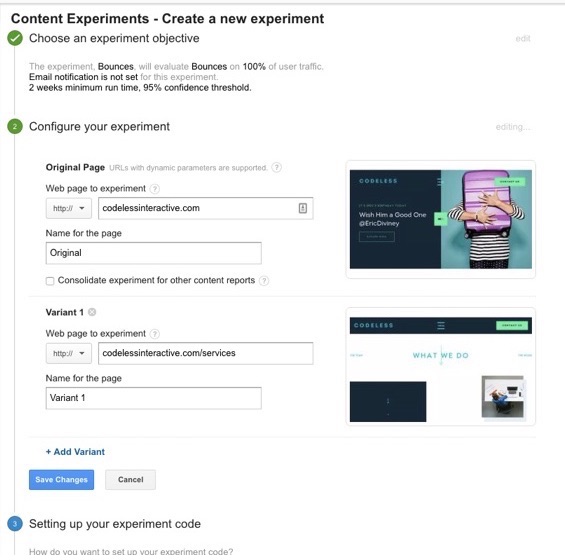
Some of the best and most popular A/B tools include:
- Optimizely
- Google Content Experiments (integrated with the Analytics suite. This post can guide you through setting up your first one)
- Kissmetrics A/B Test Report
- Unbounce (build, publish and test landing pages)
- Pagewiz
- Visual Website Optimizer
- Nelio AB Testing (WP plugin)
- Simple Page Tester (WP plugin)
- MailChimp (with A/B testing built-in to their email marketing platform)
- AWeber (email marketing with A/B testing functionality)
Using A/B Testing for Your Buyer Personas
Are you starting to appreciate the connection between these two? A/B testing can be used to steadily improve your existing buyer personas. It can fill in the blanks or areas of questionable validity.
It provides verifiable hard data on what is resonating with your visitors and customers based on their actual behavior. And if you know that, you understand them on a deeper level than you'll likely experience by asking them.
The Proof is in the Pudding
Some of what you include in your buyer personas is subject to interpretation. You have hard data that suggests your buyers don't like X, or believe Y.
The advantage of A/B testing your buyer personas is that you can either confirm or refute that in no uncertain terms.
But how?
Testing Your Ideas
Let's pretend you own a security company that sells alarms and other personal security apparatuses.
Let's further pretend that all the existing evidence strongly suggests your buyers are motivated by fear. Fear of what could happen to them and their family without the proper security measures in place.
That sort of attitude – if true – should directly influence your choices. You would speak to (but hopefully not manipulate) that fear factor.
But if you're wrong about it, your marketing would meet a very cool reception, and that translates to poor conversions and revenue for you. You could be alienating your buyers with negative and fear-associated vocabulary, images, and statistics.
Enter A/B testing.
A simple test comparing one page that appeals to fear and another that appeals to, say, the proactive peace of mind that comes with your security package (with no mention of the bad stuff that might happen without it) would confirm which resonates more with your buyers. Which one had the greater sign-ups for a no obligation security evaluation at their home? That's your true buyer persona.
Whatever your assumptions and beliefs about them, a simple A/B test can bring it all into focus.
- Is their chief buying motivation A or B?
- Are they more concerned about X or Y?
- Do they respond to negative or positive language?
- Is the main selling point for them this or that?
- Are they pulled into action by discounts, coupons, sales, or BOGO offers?
- Do they prefer step-by-step how to guides, or summary checklists?
- Is feature A or feature B the biggest draw?
- Do they react most to benefit A or benefit B?
- And on and on and on…
Get your feet wet with the free and basic Google Content Experiments feature in Google Analytics to test one against another. Just be sure to frame each one as a testable hypothesis (“I believe my buyers are motivated more by the money they can save than the ease of use”).
The Eisenberg Customer Modalities
Introduced by Bryan and Jeffrey Eisenberg in their book Waiting for Your Cat to Bark?, the customer modalities classifies each buyer as one of four different types:
- Competitive
- Methodical
- Spontaneous
- Humanistic
Each is characterized by the speed of their decisions, and whether they're driven by emotion or logic. It's just one more example of how you could organize your customers and frame your marketing, content, and communication for them.
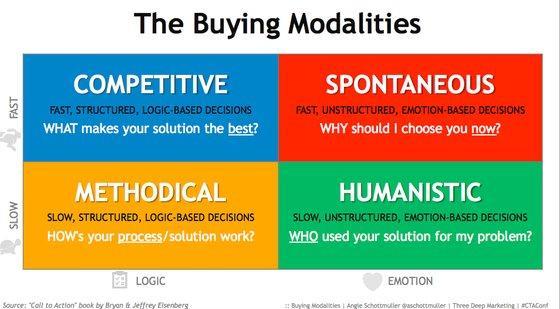
Are your buyers mainly methodical – motivated by logic, thoroughness, details, and the slow approach – or spontaneous – making snap decisions based on their gut and the excitement of the purchase? Both would demand a very different marketing approach.
Not sure? Test, test, and test your working hypothesis. They each want something different from your website and content.
- Competitive buyers want to know what makes you the best, and what your product/service does for them.
- Methodical buyers need to know exactly how your product solves their problem or addresses their need.
- Spontaneous buyers are concerned with why your product is the right fit for them at this moment in time.
- Humanistic buyers expect to see your product being used in the real world. They want to see case studies, pictures, testimonials, and examples. They demand a little bit of personality.
The humble A/B test can remove all lingering doubt. Slot your buyers into their personas with full confidence that you know what they want and what makes them tick.
And once you know that, you can craft everything for them specifically. Your personas are tweaked, refined, and polished one hypothesis at a time.
It won't happen overnight, but you'll eventually end up with personas that are accurate and battle-tested. You'll be able to climb inside their head for anything and everything. You'll slowly but steadily know what you need to know in order to connect, engage, and convert like a boss.
Buyer personas and A/B tests are good. A/B testing your buyer personas? That's better. That's marketing for the digital age.
Have you experimented with A/B testing your personas? What insights did it reveal? Leave your comments below.
About the Author: Aaron Agius is an experienced search, content and social marketer. He has worked with some of the world's largest and most recognized brands to build their online presence. See more from Aaron at Louder Online, their Blog, Facebook, Twitter, Google+ and LinkedIn.
